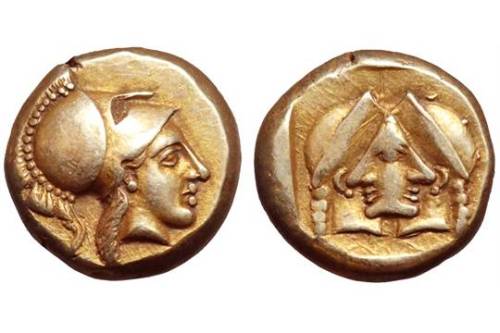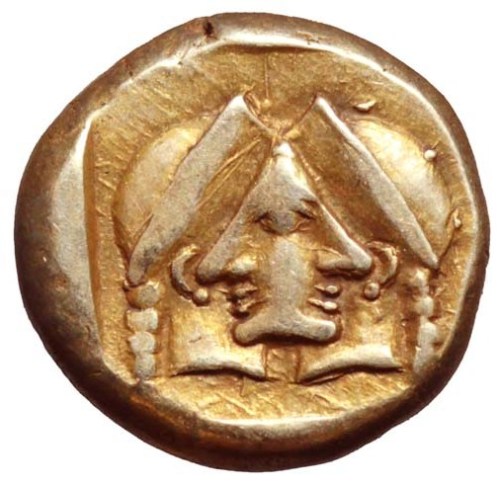archaicwonder:Early & Rare Example of Paradoxical Illusion This very rare electrum h
archaicwonder: Early & Rare Example of Paradoxical Illusion This very rare electrum hekte (only 8 known examples) is from the ancient city of Mytilene on the island of Lesbos, circa 454-427 BC. On the obverse is the head of Athena wearing a crested Corinthian helmet while the reverse shows two confronted female heads with their faces overlapping, all within an incuse square. This coin seems like a perfectly ordinary hekte when the obverse is first viewed; it is only when the coin is flipped to reveal its highly unusual reverse does the importance and novelty of the type become apparent. Employing a simple but effective form of optical illusion, the reverse appears to show the same female portrait both to the left and to the right. The design is deliberately intended to confound the eye and engage the viewer’s attention in attempting to resolve both portraits independently of the other, which is of course impossible, thus presenting the viewer with a visual paradox. The importance of this type, both in terms of numismatic art and in the wider context of Greek art in general, cannot be understated. It is a thoroughly novel, and never to be repeated experiment in paradoxical illusion on the coinage of a Greek city-state. Keep reading -- source link
Tumblr Blog : archaicwonder.tumblr.com
#greece#hellenism#grecia#helenismo#economia

